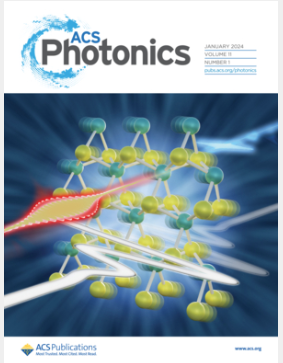Low-Loss Charge Transfer Plasmons in Graphene/α-RuCl3 Heterostructures Below 40 K
IF 6.7
1区 物理与天体物理
Q1 MATERIALS SCIENCE, MULTIDISCIPLINARY
引用次数: 0
Abstract
Charge transfer at material interfaces governs a wide range of physical properties, from electronic band structures to emergent collective excitations. In two-dimensional (2D) material heterostructures, charge transfer phenomena play important roles in enabling novel quantum phases, proximity effects, and tunable plasmonic responses. One representative charge transfer interface is formed between α-RuCl3, a van der Waals material with high electron affinity, and graphene. Significant charge transfer across this interface induces the formation of charge-transfer plasmon polaritons (CPPs), hybrid excitations between light and charge oscillations. However, previous studies found that as the charge transfer process takes place, α-RuCl3 becomes lossy, which limits the quality factor of CPPs. Here, we investigate CPPs down to 10 K using a home-built scattering-type scanning near-field optical microscope (s-SNOM) optimized for low-temperature measurements. Our study reveals a dramatic suppression of plasmon loss channels below 40 K, contributing to a significant enhancement in the plasmonic quality factor. This reduction in loss is likely attributed to the blue shift of the correlation-induced Mott gap in α-RuCl3 with decreasing temperature, along with the reduction of phonon scattering at low temperature. Our results highlight the potential of using s-SNOM and CPPs to study complex 2D interfaces and reveal correlated electron dynamics in the underlying material.

石墨烯/α-RuCl3异质结构中的低损耗电荷转移等离子体
材料界面上的电荷转移控制着广泛的物理性质,从电子能带结构到紧急集体激发。在二维(2D)材料异质结构中,电荷转移现象在实现新的量子相、邻近效应和可调谐等离子体响应中起着重要作用。具有高电子亲和性的范德华材料α-RuCl3与石墨烯之间形成了一个具有代表性的电荷转移界面。通过该界面的显著电荷转移诱导电荷转移等离子激元(CPPs)的形成,光和电荷振荡之间的混合激发。然而,以往的研究发现,随着电荷转移过程的发生,α-RuCl3变得有损耗,这限制了CPPs的质量因子。在这里,我们使用自制的针对低温测量优化的散射型扫描近场光学显微镜(s-SNOM)研究了低至10 K的CPPs。我们的研究揭示了40 K以下等离子体损失通道的显著抑制,有助于显著提高等离子体质量因子。这种损耗的降低可能是由于α-RuCl3中相关诱导的Mott隙随着温度的降低而发生蓝移,同时在低温下声子散射减少。我们的研究结果强调了使用s-SNOM和CPPs研究复杂二维界面和揭示底层材料中相关电子动力学的潜力。
本文章由计算机程序翻译,如有差异,请以英文原文为准。
求助全文
约1分钟内获得全文
求助全文
来源期刊

ACS Photonics
NANOSCIENCE & NANOTECHNOLOGY-MATERIALS SCIENCE, MULTIDISCIPLINARY
CiteScore
11.90
自引率
5.70%
发文量
438
审稿时长
2.3 months
期刊介绍:
Published as soon as accepted and summarized in monthly issues, ACS Photonics will publish Research Articles, Letters, Perspectives, and Reviews, to encompass the full scope of published research in this field.
 求助内容:
求助内容: 应助结果提醒方式:
应助结果提醒方式:


